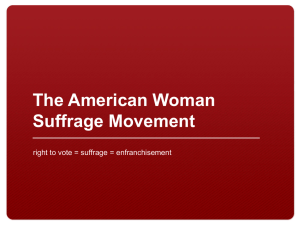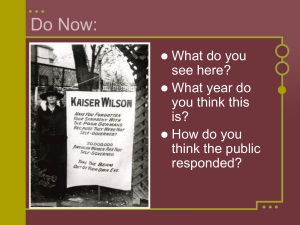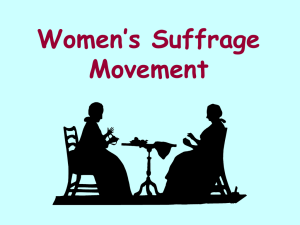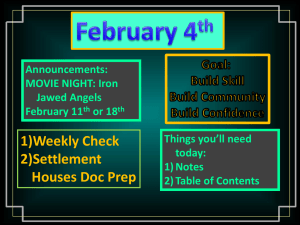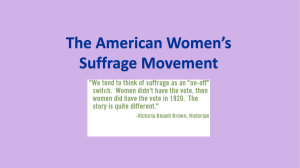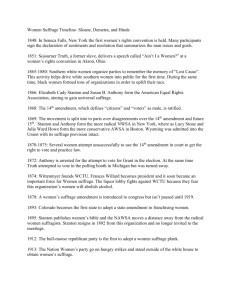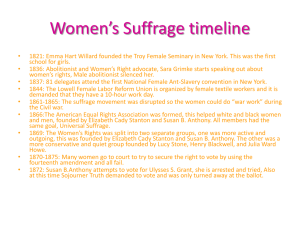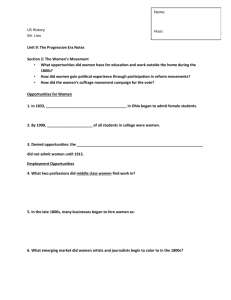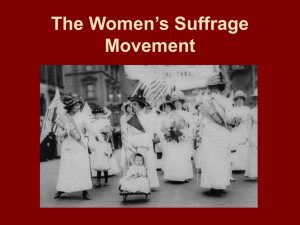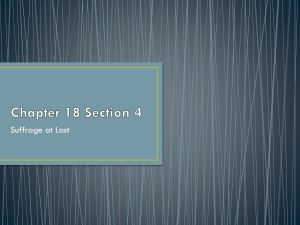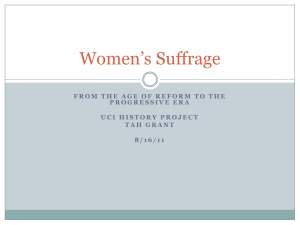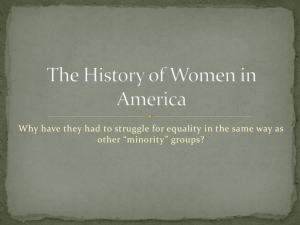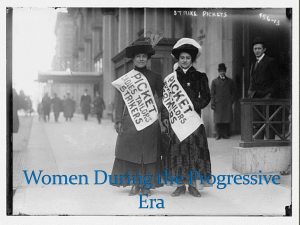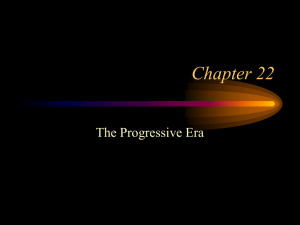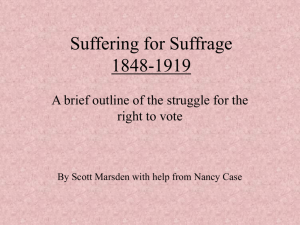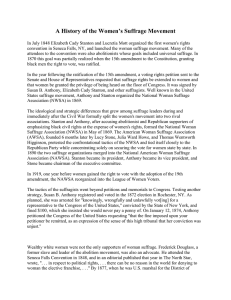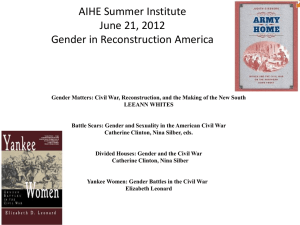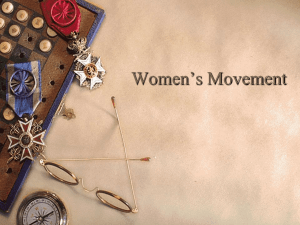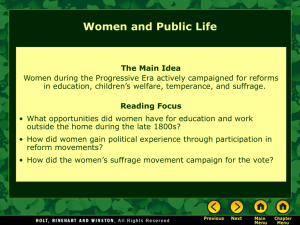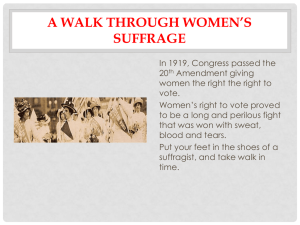The American Women's Suffrage Movement
advertisement
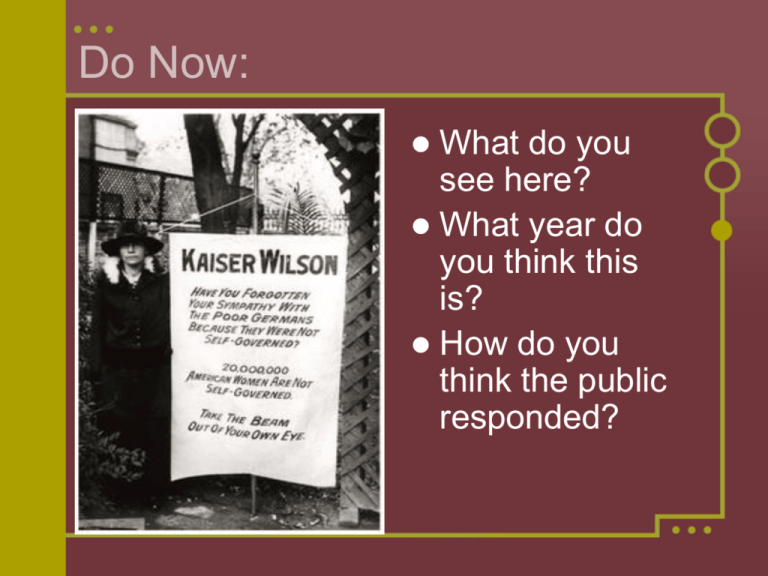
Do Now: What do you see here? What year do you think this is? How do you think the public responded? The American Woman Suffrage Movement 1848-1920 Right to vote: Suffrage = Enfranchisement = Franchise Seneca Falls, NY 1848 In early 1800s, women involved in abolition (no slavery), temperance (no alcohol) Group of men and women gather in Seneca Falls, NY in 1848 Led by Elizabeth Cady Stanton and Lucretia Mott Write Declaration of Sentiments Fifteenth Amendment, 1871 Grants African-American men the right to vote Disappoints many women who thought African American men and women would be enfranchised together African Americans split over whether men should get vote before women Frederick Douglass, 1869 “When women, because they are women, . . . are dragged from their houses and hung upon lamp posts; when their children are torn from their arms, and their brains dashed upon the pavement . . . then they will have an urgency to obtain the ballot equal to our own.” But was this not true for the black woman? “Yes, yes, yes. It is true for the black woman but not because she is a woman but because she is black!” Sojourner Truth, 1869 “There is a great stir about colored men getting their rights, but not a word about the colored women . . . And if colored men get their rights, and not colored women theirs, you see the colored men will be masters over the women, and it will be just as bad as it was before.” Before 1910 Women’s suffrage movement splits, but then unites in 1890 National American Woman Suffrage Association (NAWSA) Big leaders: Susan B. Anthony, Elizabeth Cady Stanton Two big strategies: Try Try to win suffrage state-by-state to pass a Constitutional Amendment (but this would need to be ratified by 36 states--or three-fourths) Susan B. Anthony Susan B. Anthony tried several times to introduce an Amendment bill in the late 1800s, but it was always killed in the Senate. Anti-Suffragists: Those who opposed suffrage (many “Anti’s” were women) Arguments of Anti-Suffragists: Women were high-strung, irrational, emotional Women were not smart or educated enough Women should stay at home Women were too physically frail; they would get tired just walking to the polling station Women would become masculine if they voted The Next Generation Elizabeth Cady Stanton died 1902 Susan B. Anthony died 1906 But in the early 1900s many young middle-class women were going to college and joining the suffrage movement Many working-class women also joined the cause, hoping the right to vote would help improve working conditions Safe or Sorry? Carrie Chapman Catt led the National American Woman Suffrage Association. She believed in: Careful state-by-state strategy Support President Wilson even if he doesn’t outright support suffrage (because Democrats were a safer bet than Republicans) Act ladylike! Don’t embarrass the movement National Woman’s Party Alice Paul led the National Woman’s Party; believed in more aggressive strategies: Focused on passing a Constitutional Amendment Picked up un-ladylike strategies from British suffragists (e.g., heckling politicians, picketing) Refused to support President Wilson if he wouldn’t support woman suffrage NWP members were arrested for picketing in front of the White House; they were put in jail, went on a hunger strike and were force-fed 19th Amendment, 1920 “The right of citizens of the United States to vote shall not be denied or abridged by the United States or by any State on account of sex. Congress shall have power to enforce this article by appropriate legislation.” (Tennessee was the 36th state to ratify and it passed by only 1 vote)
